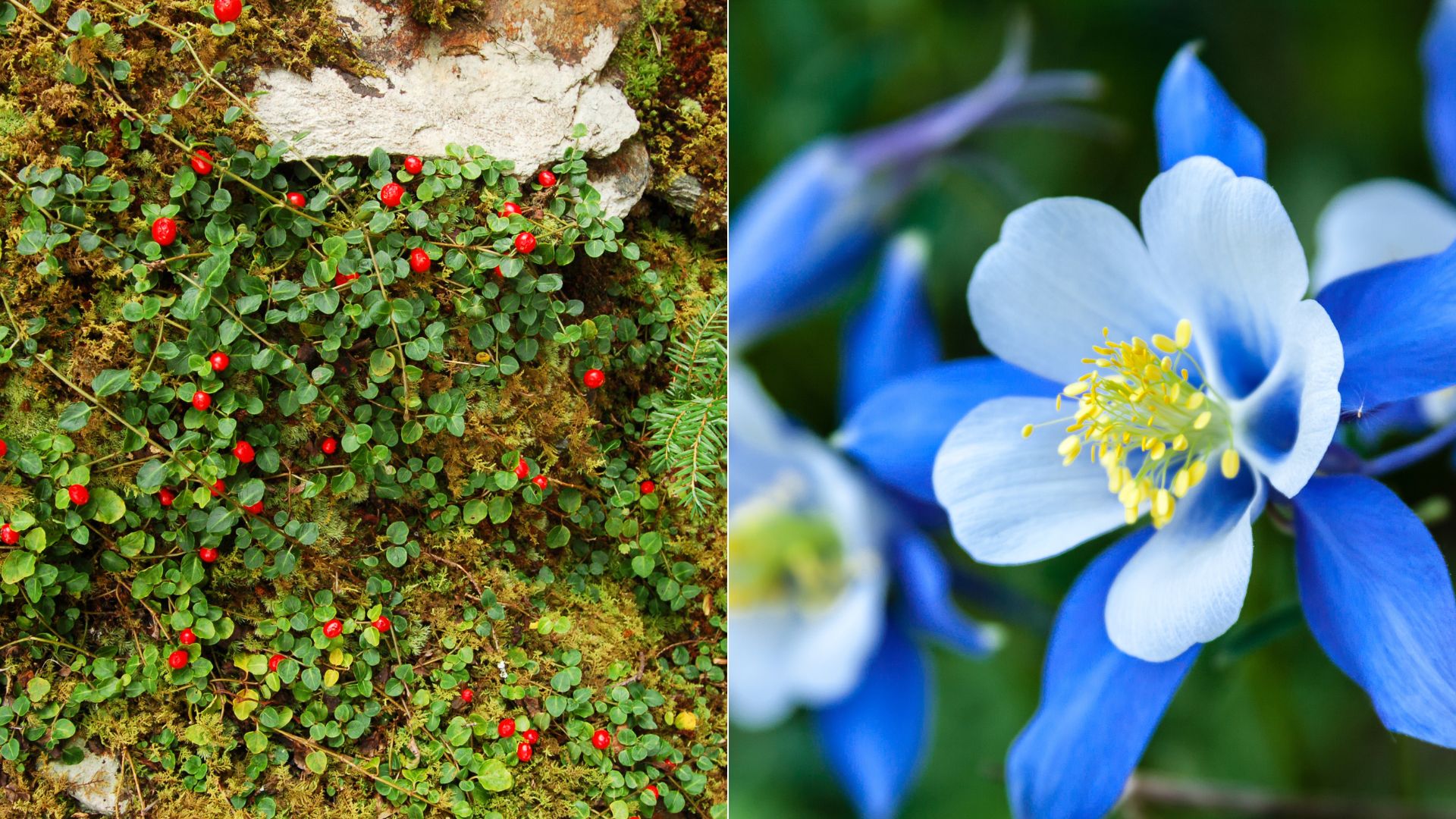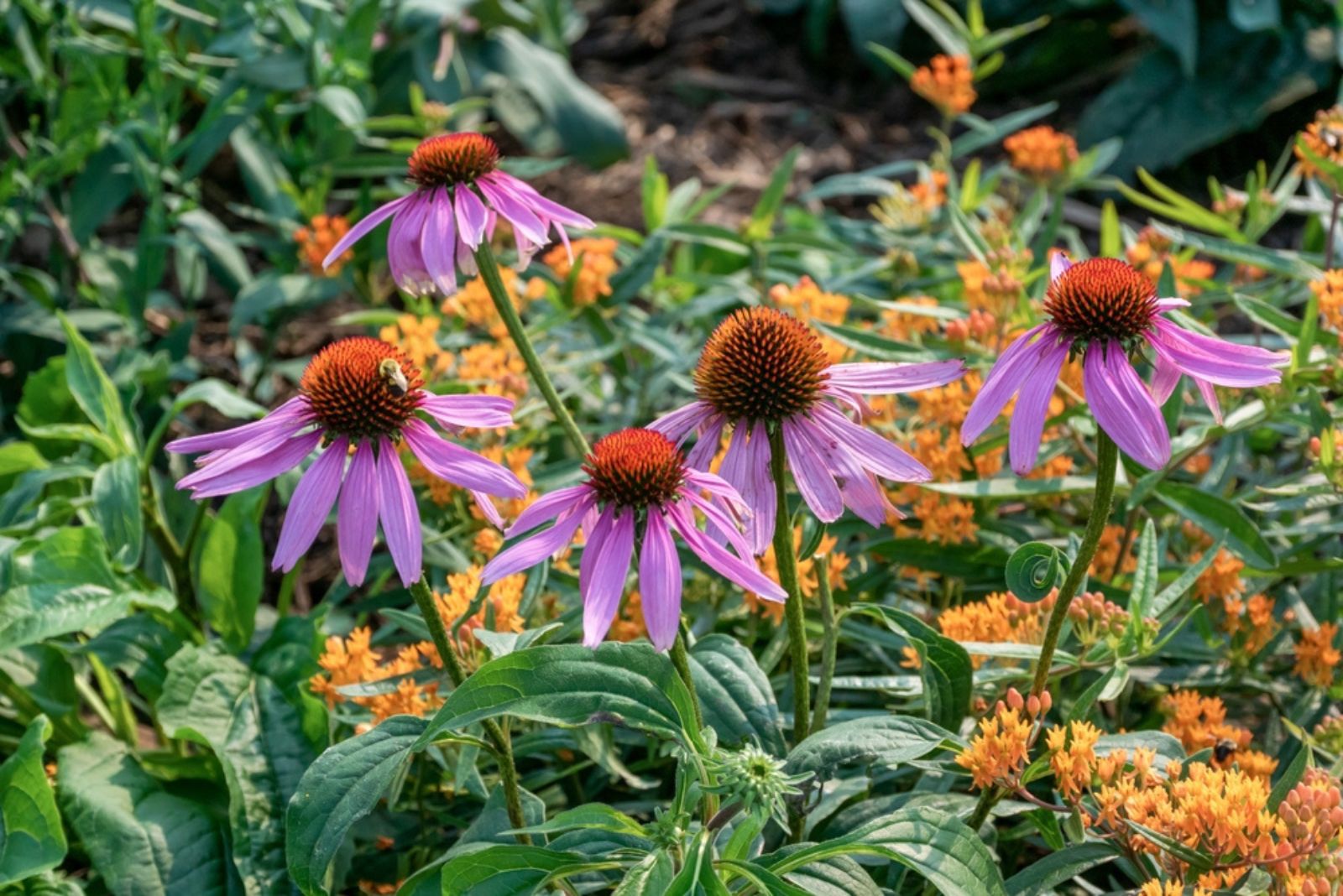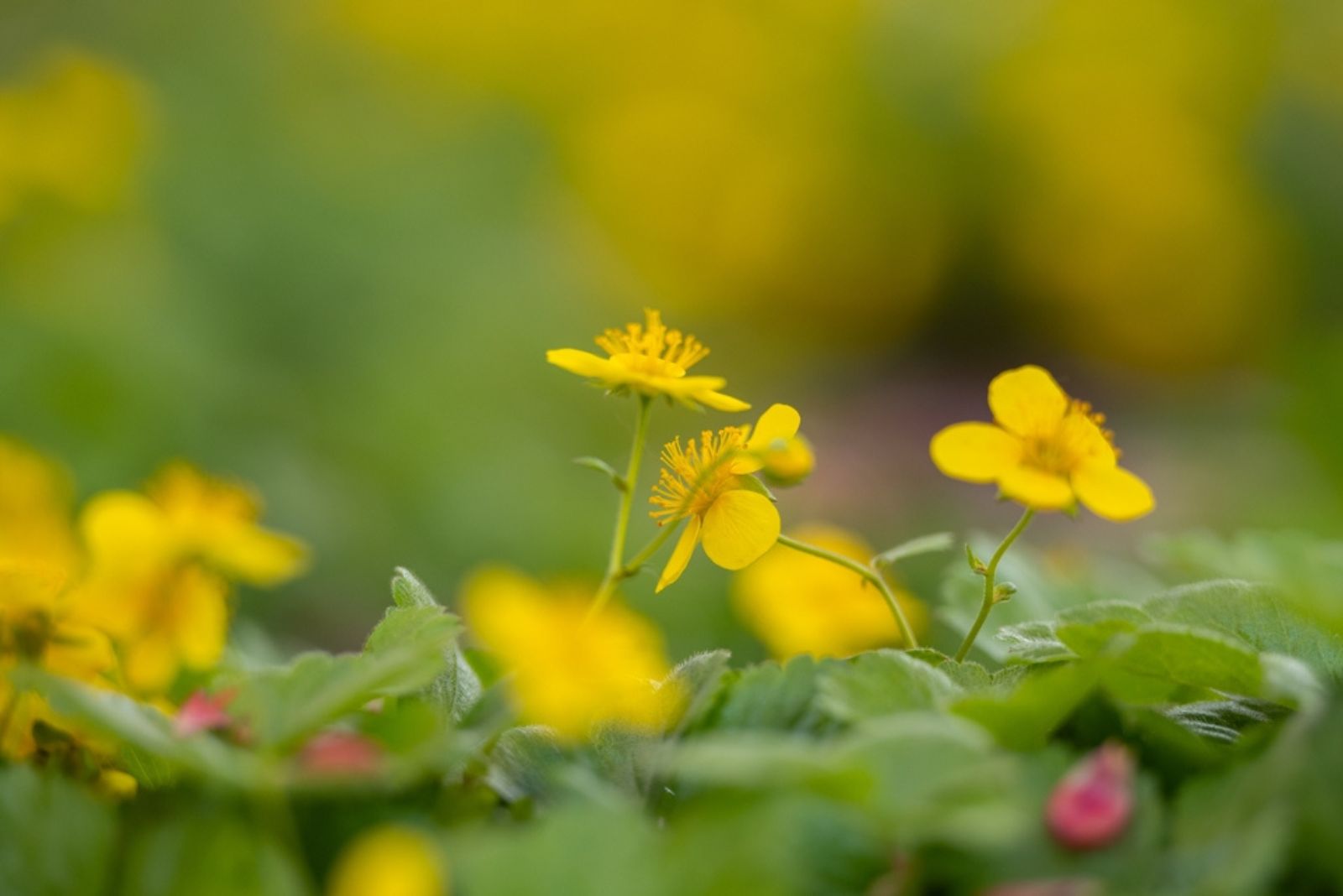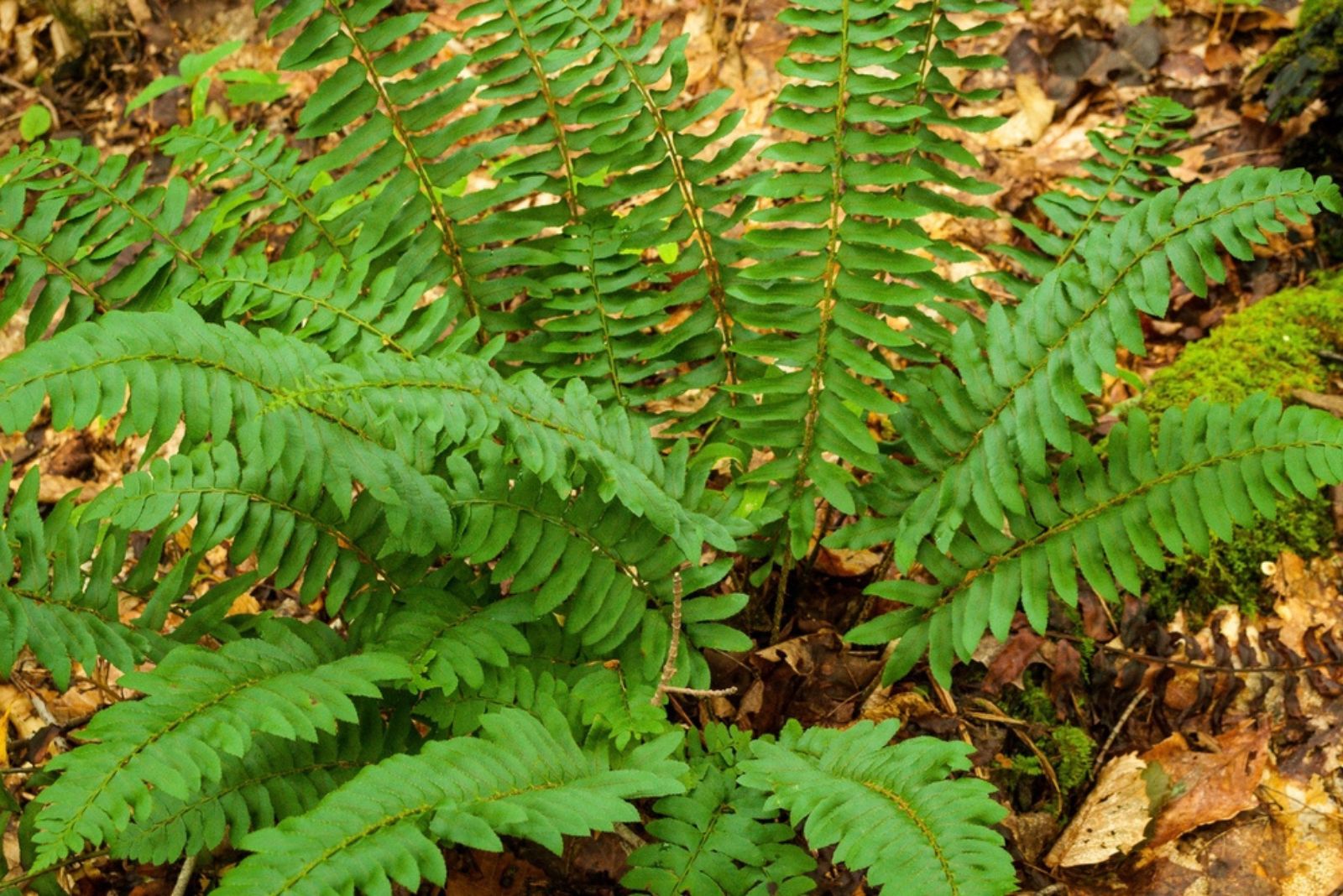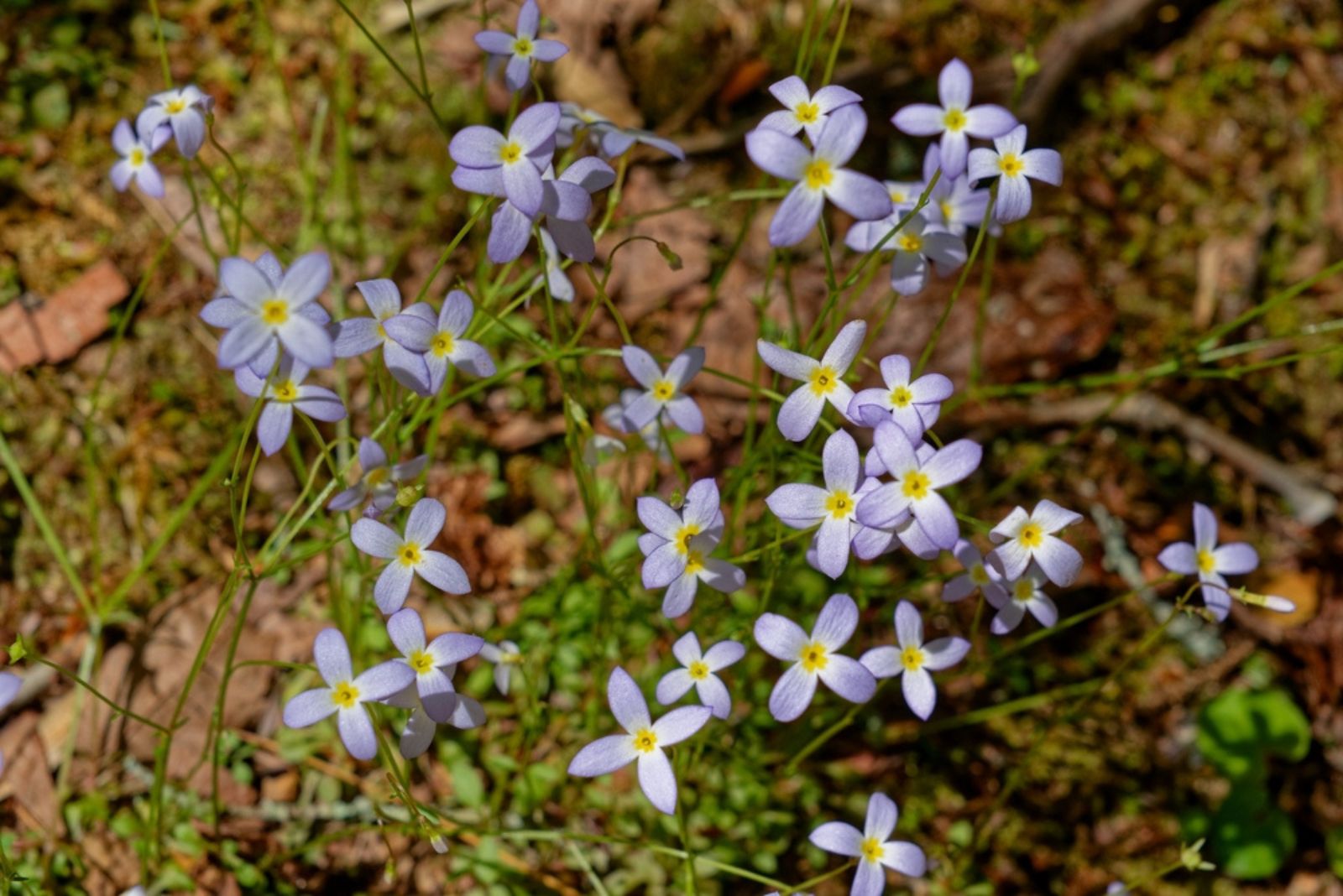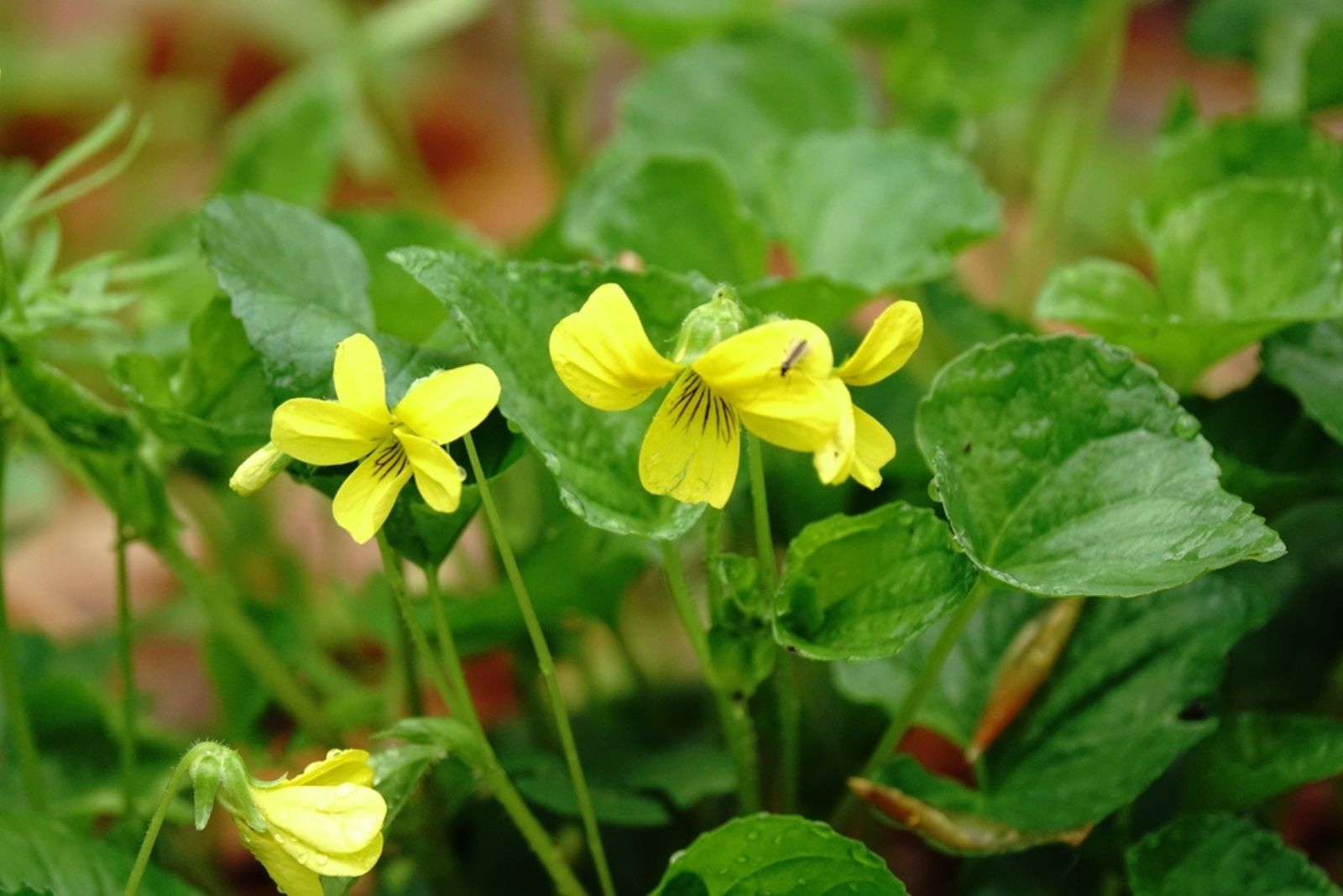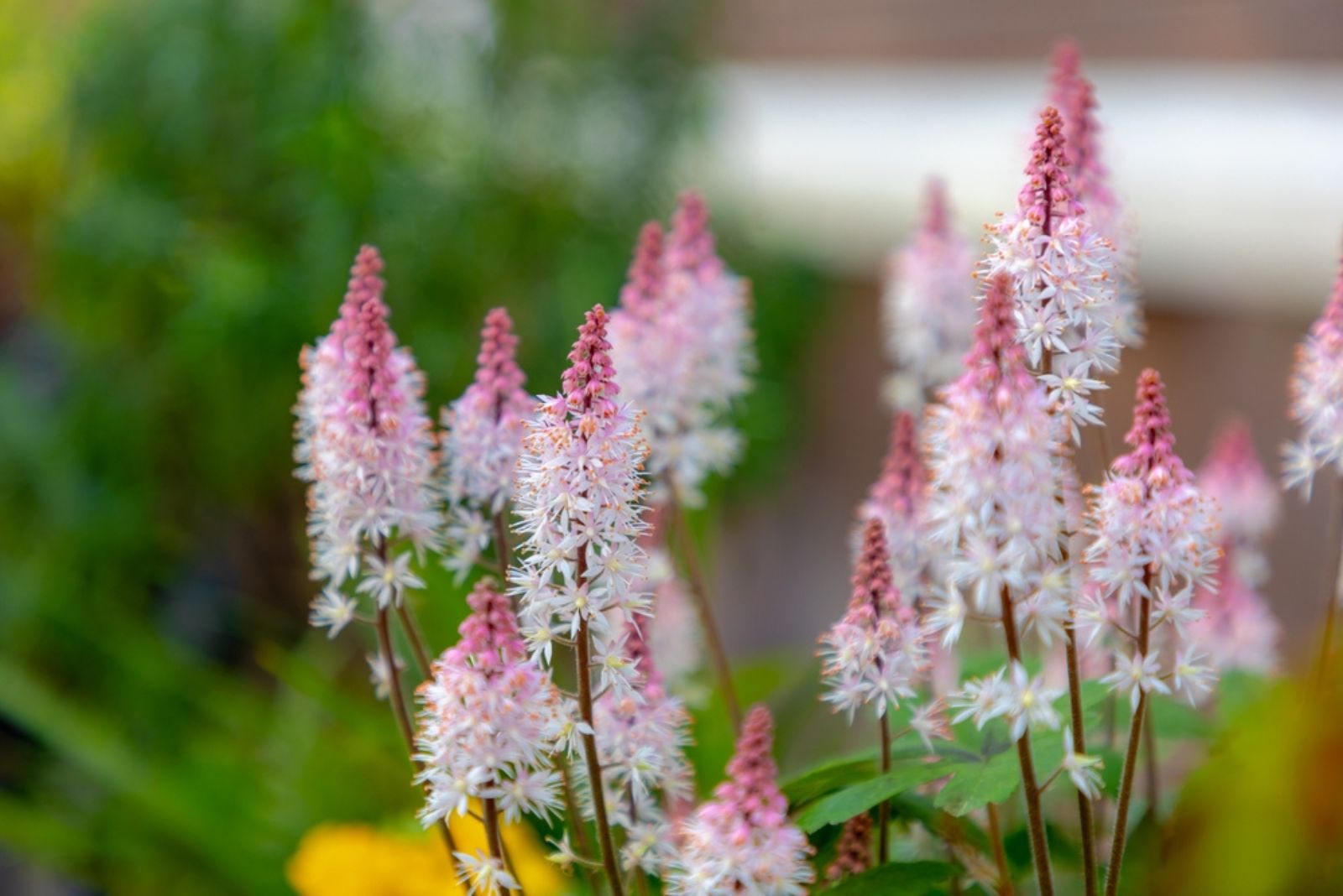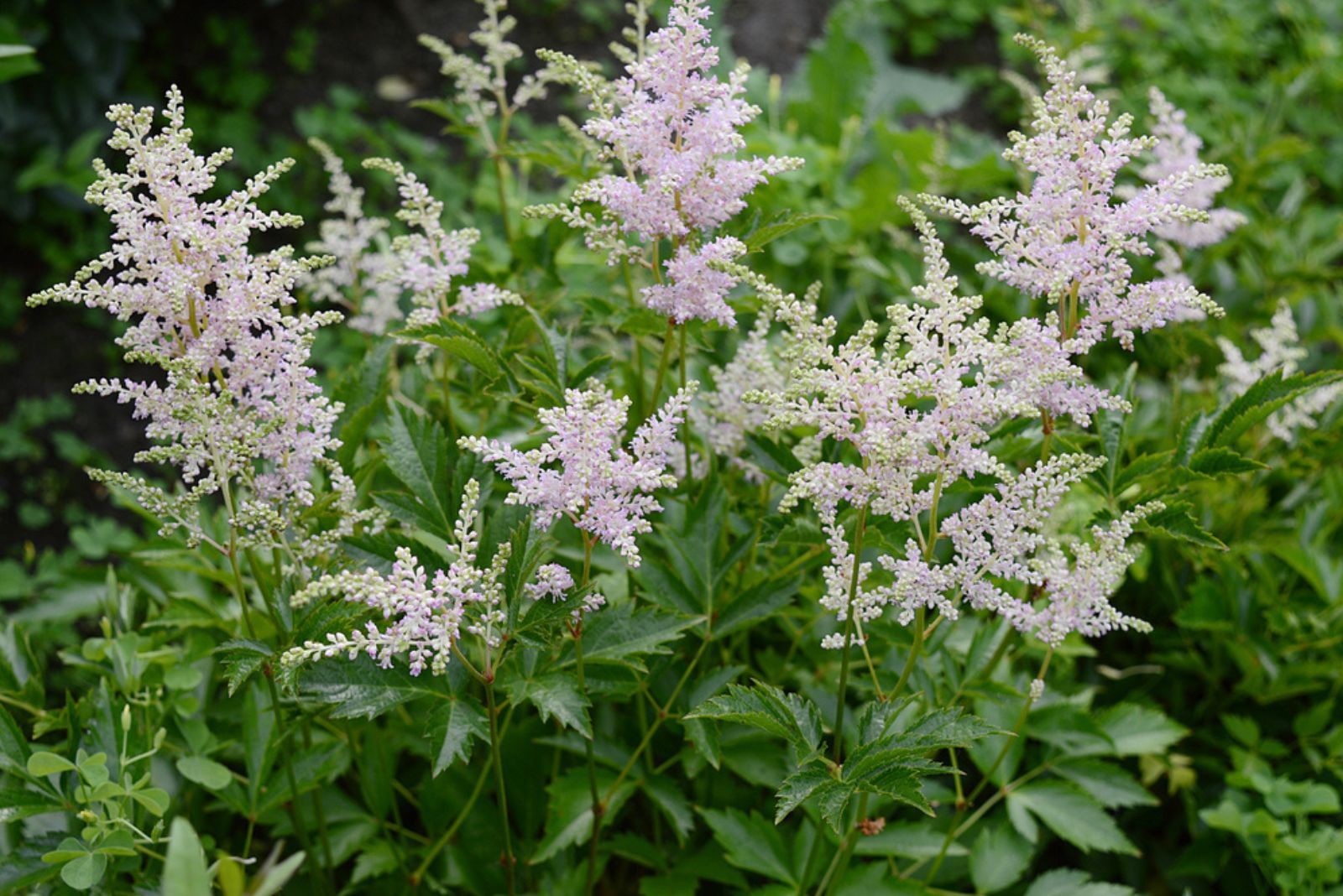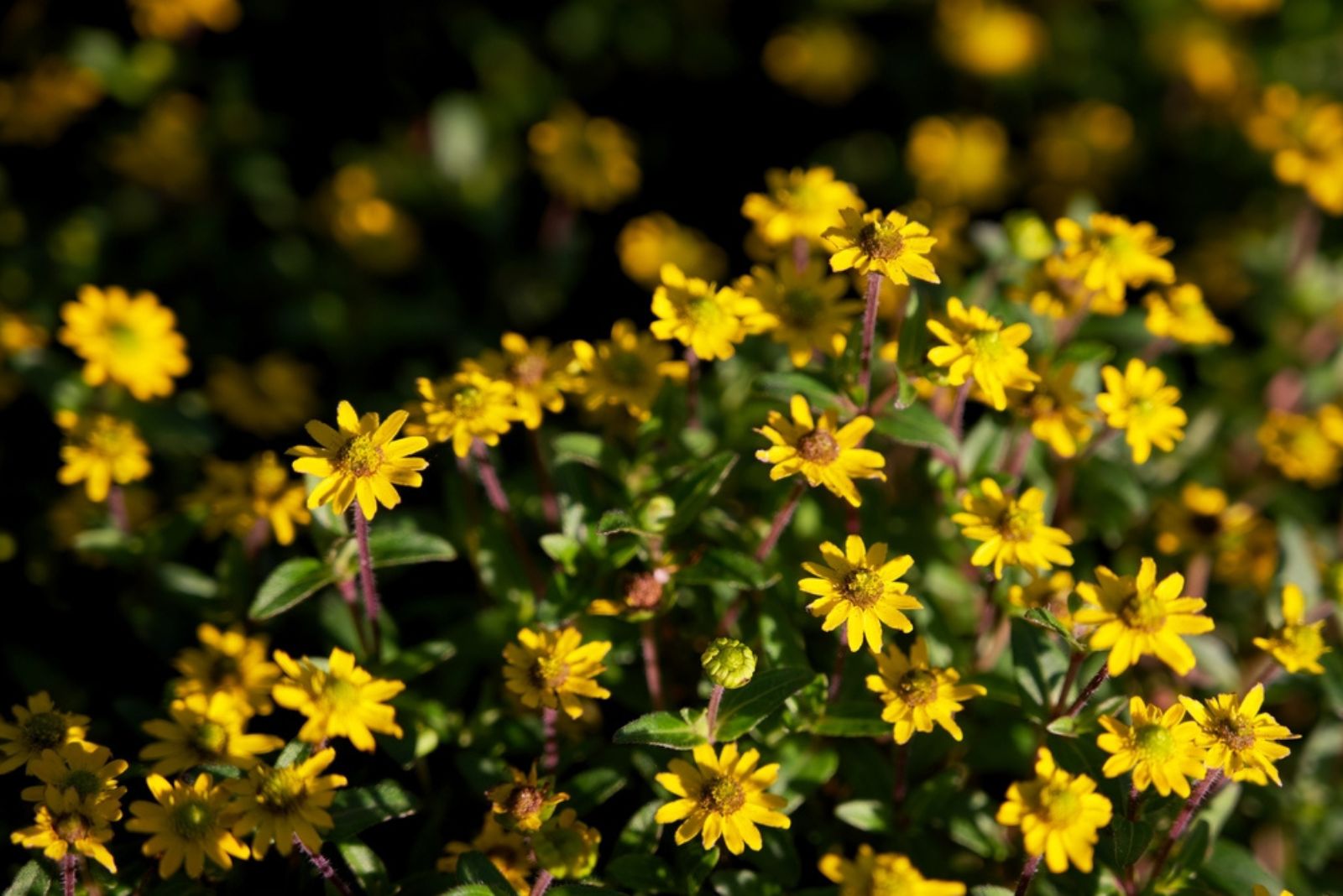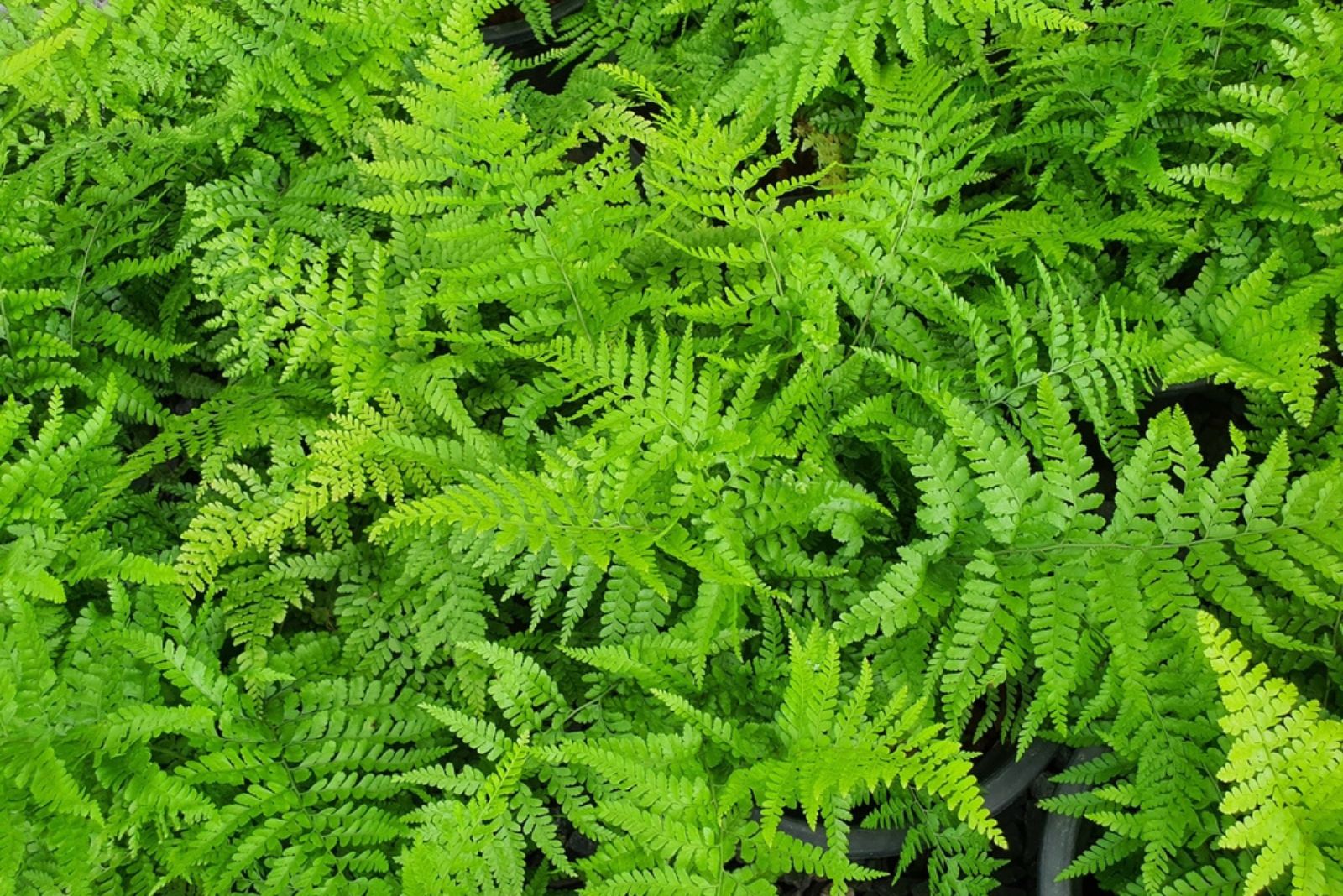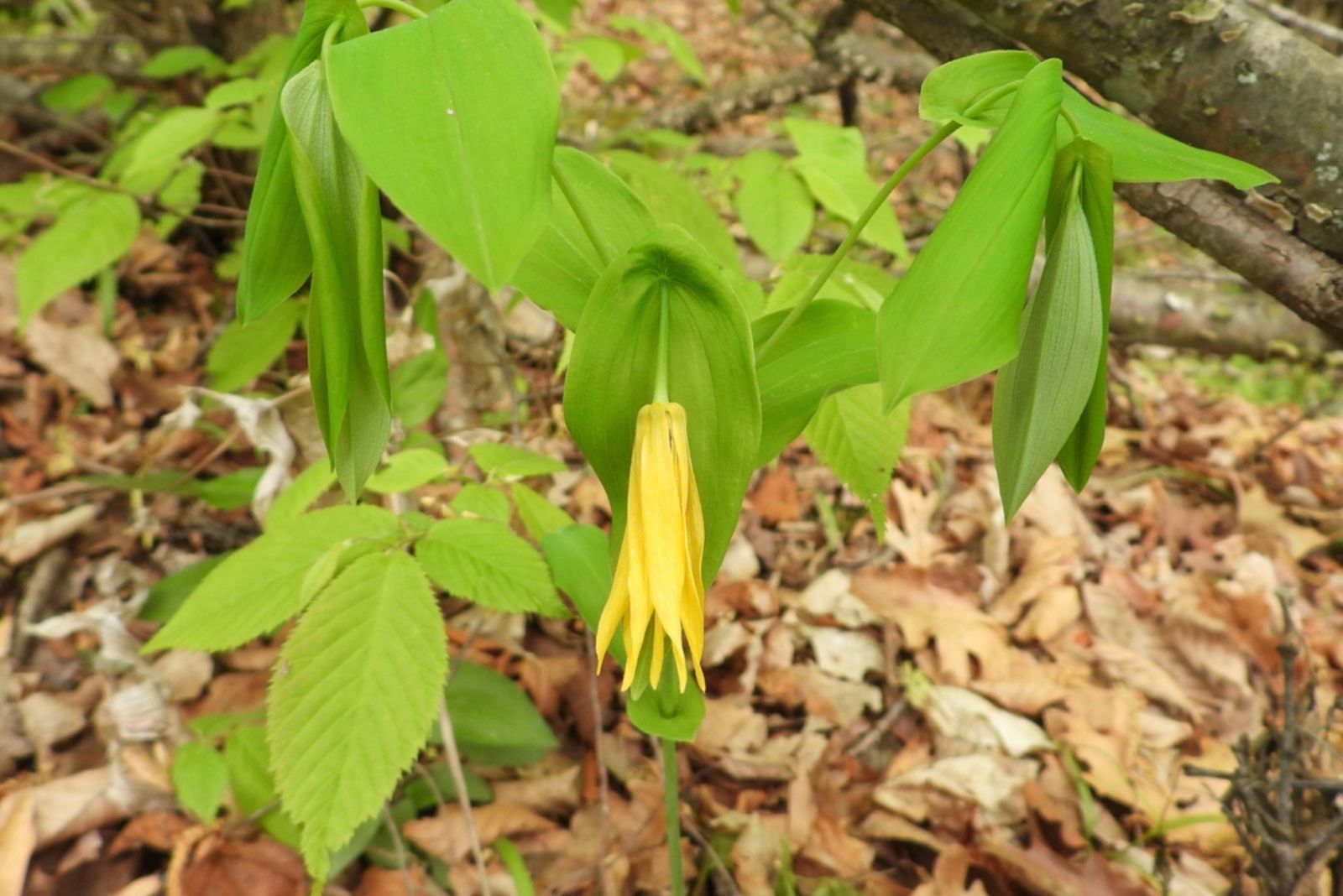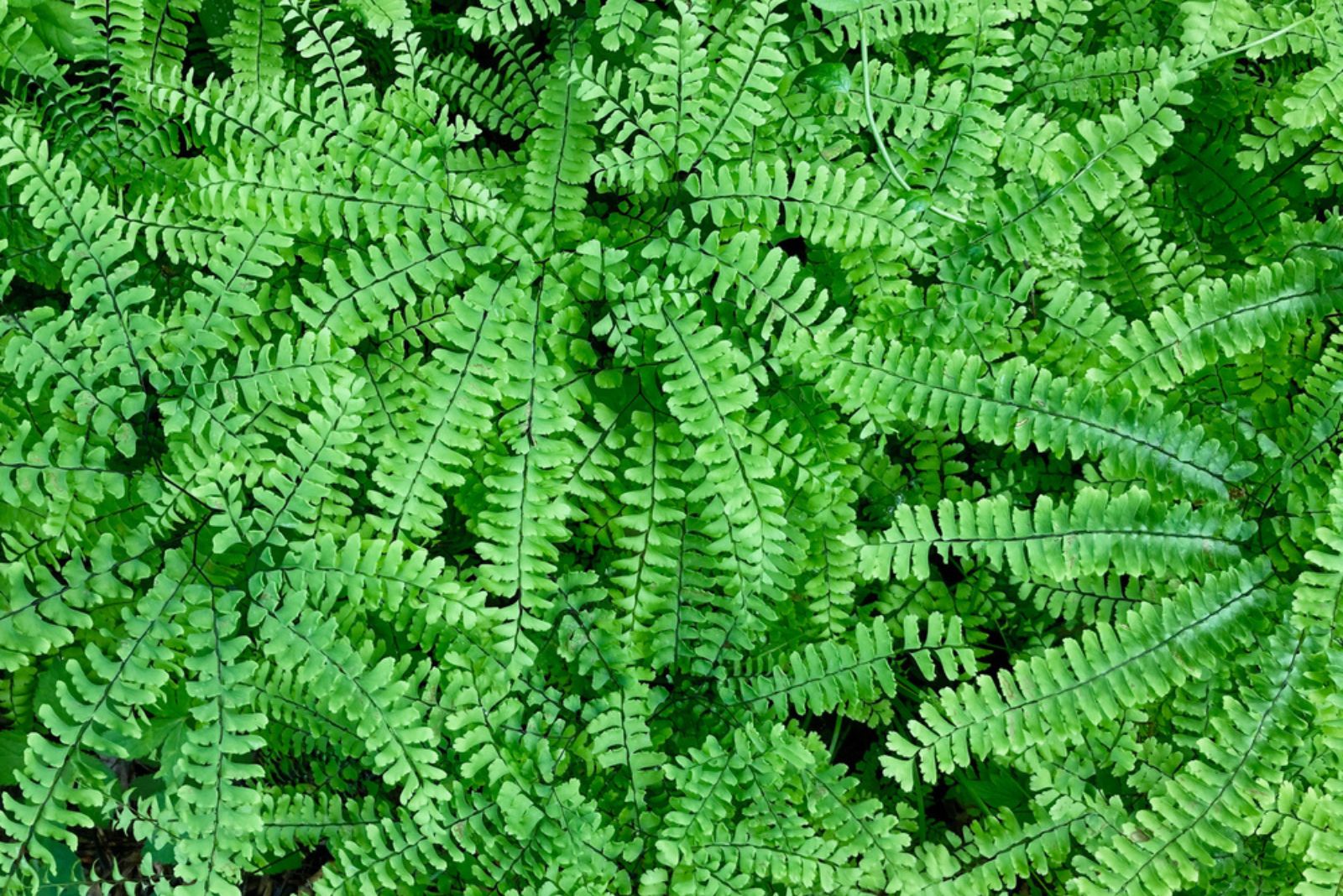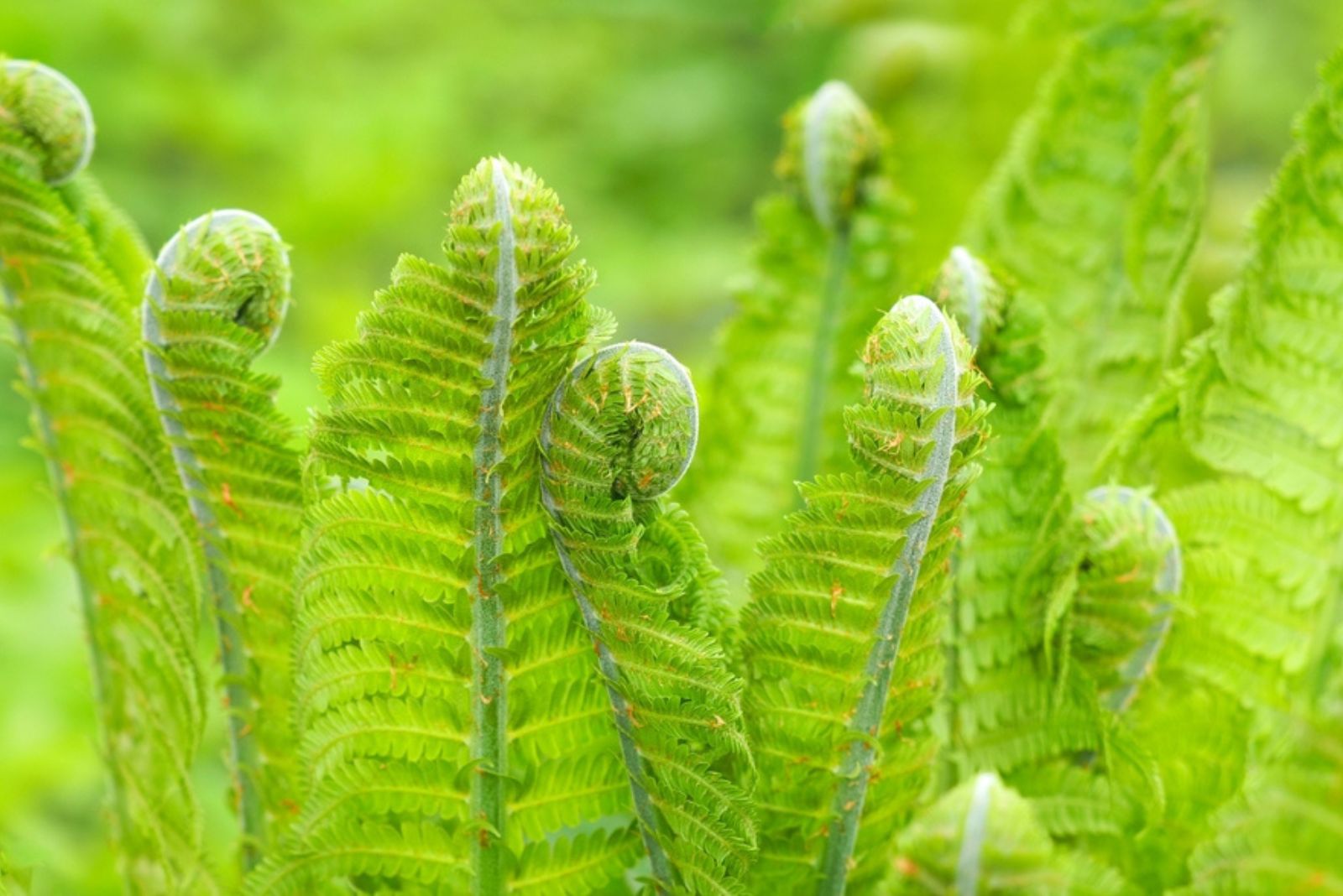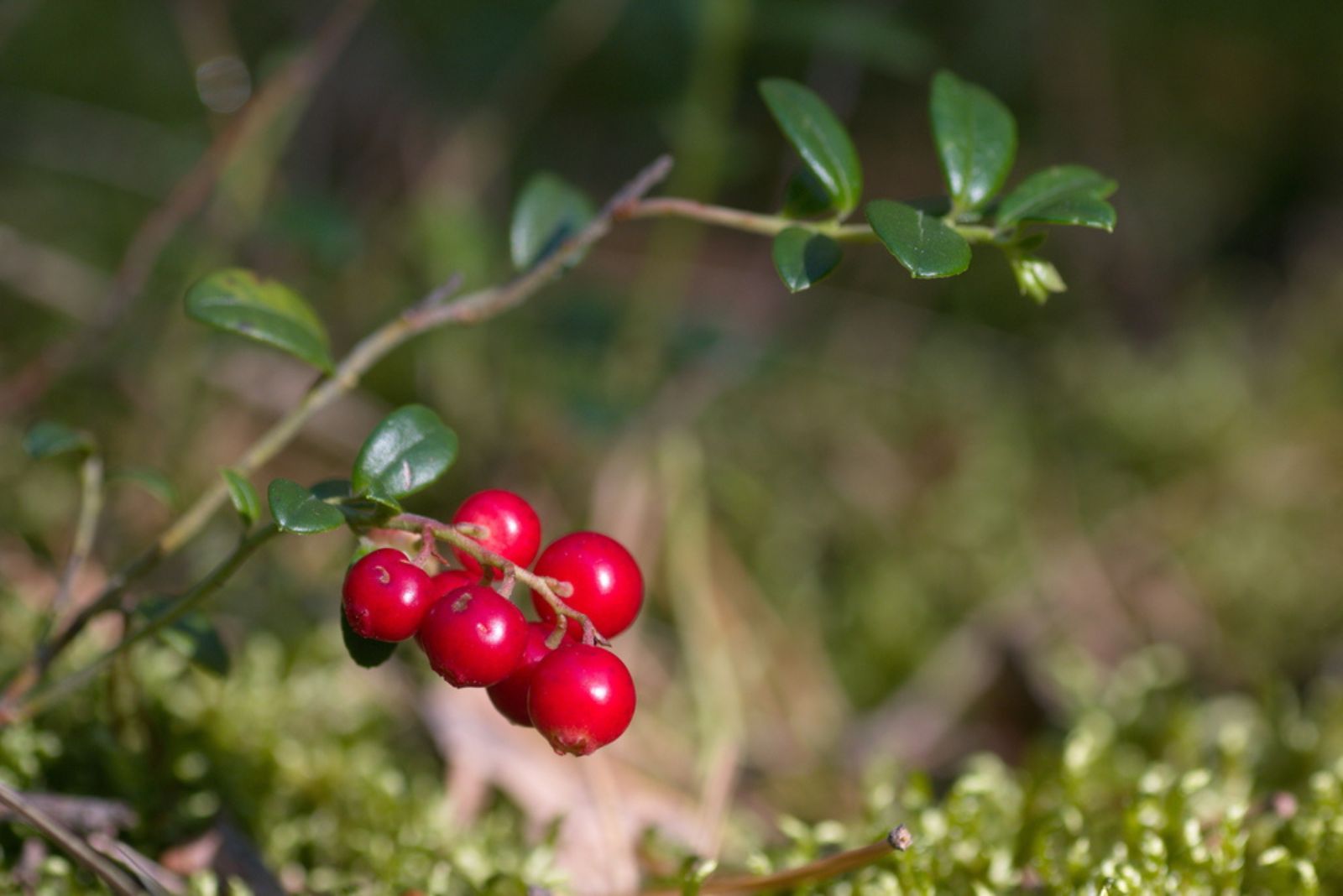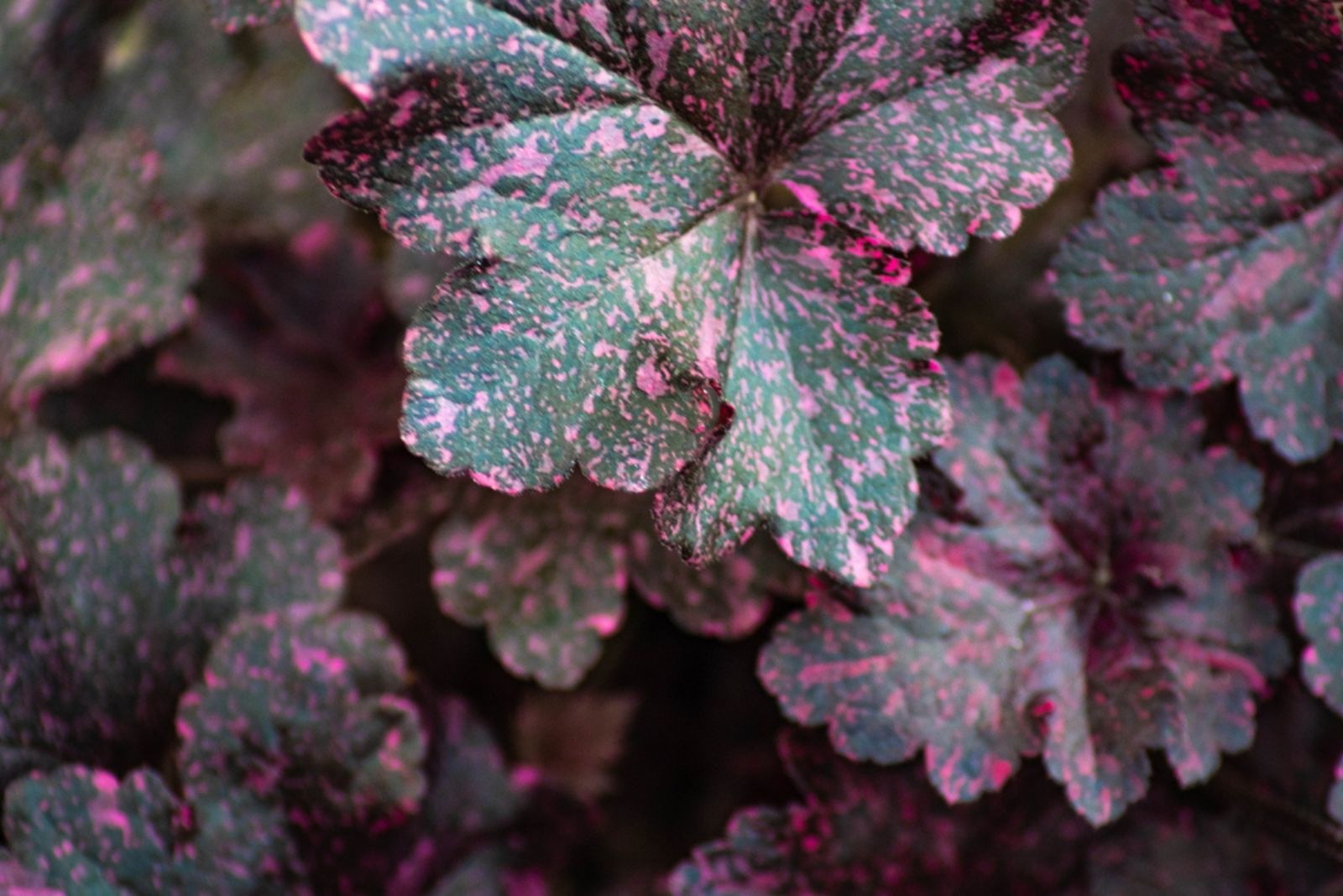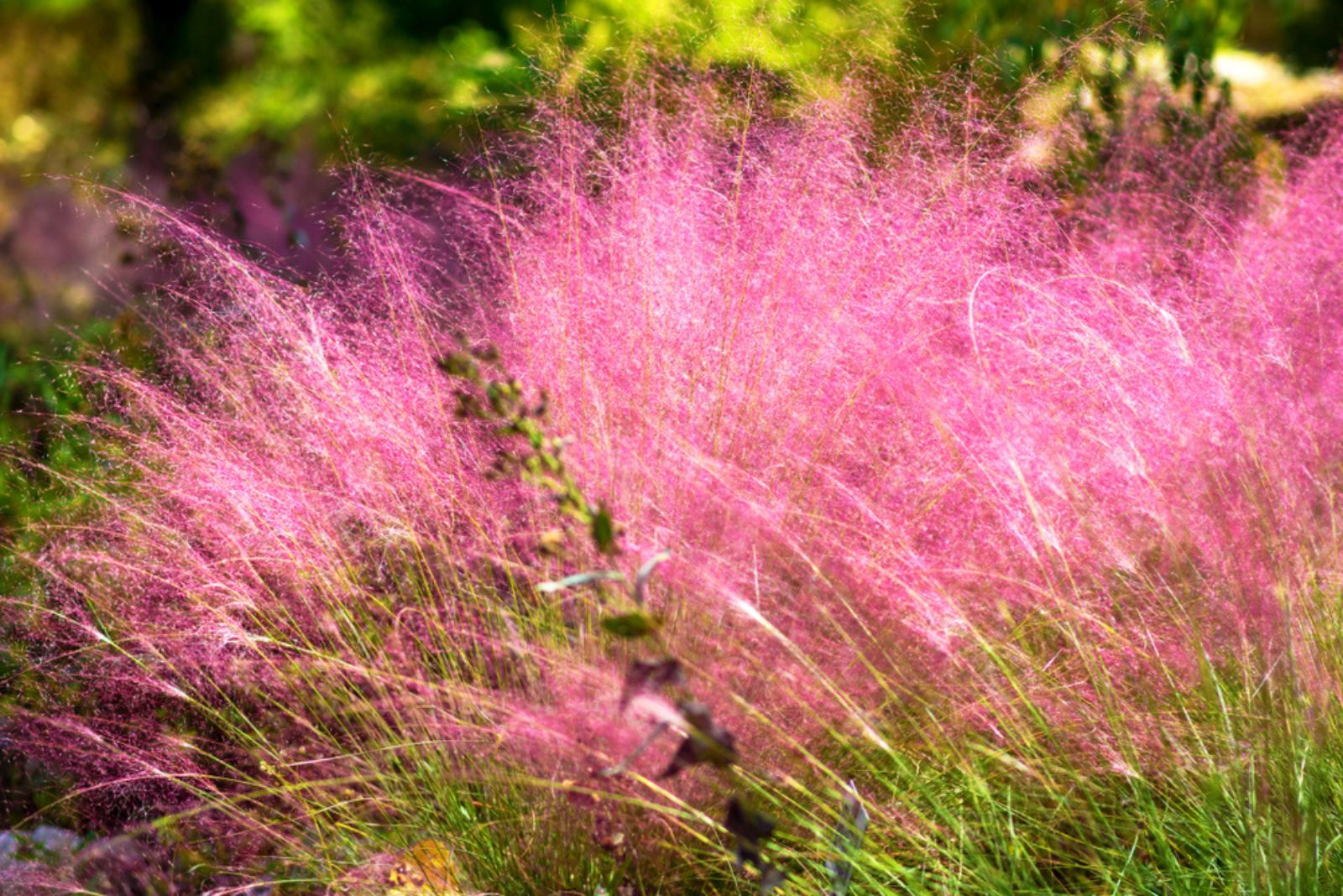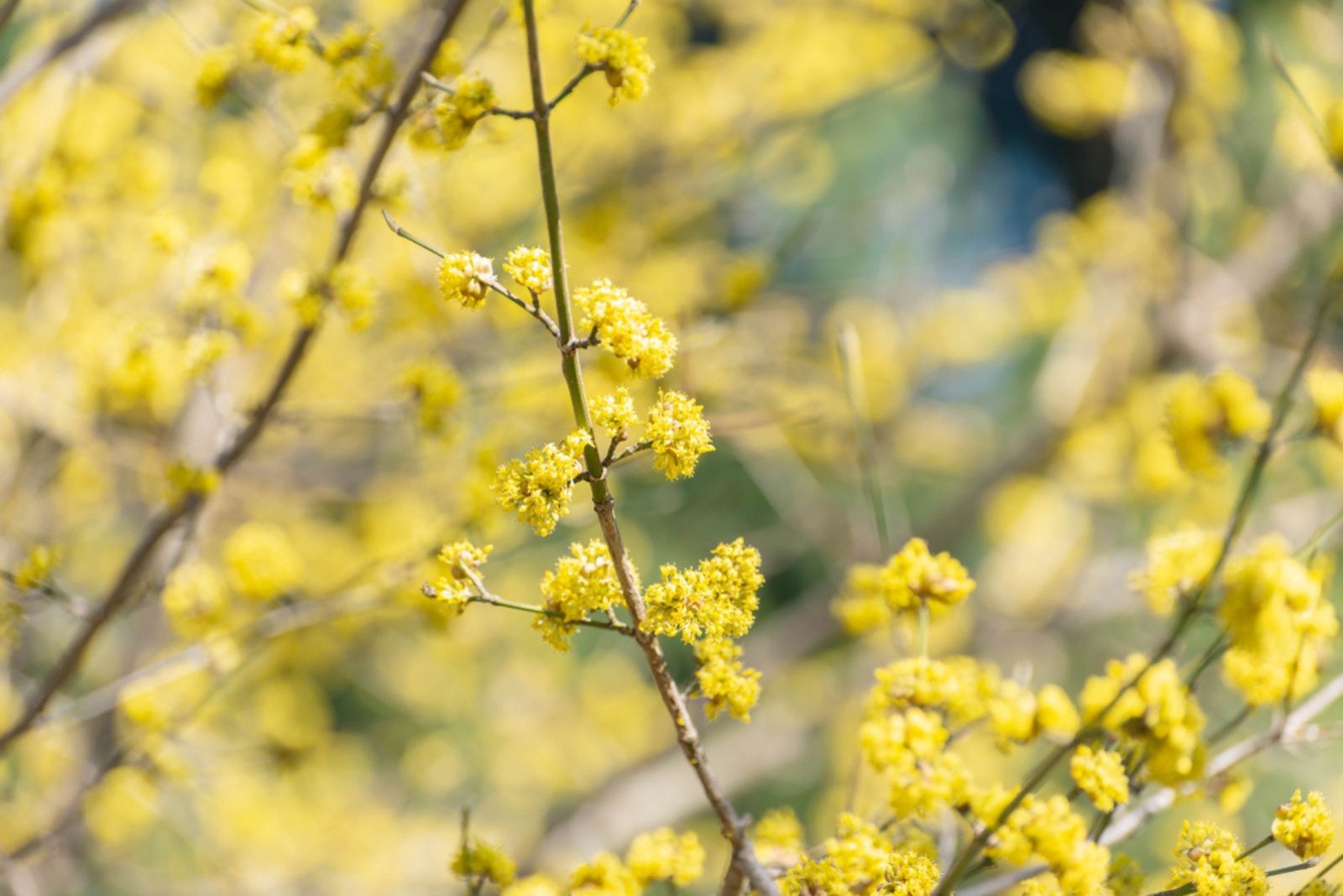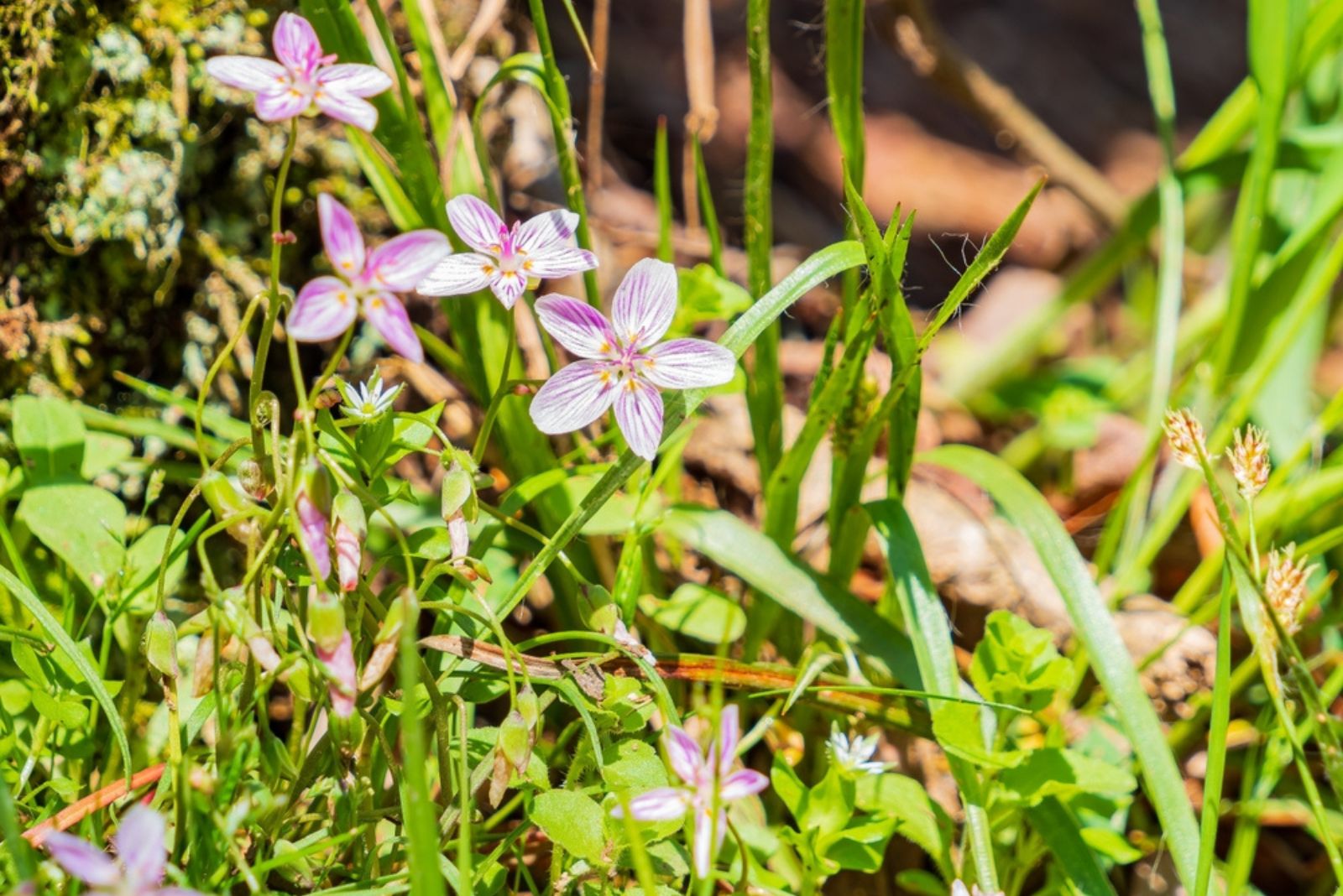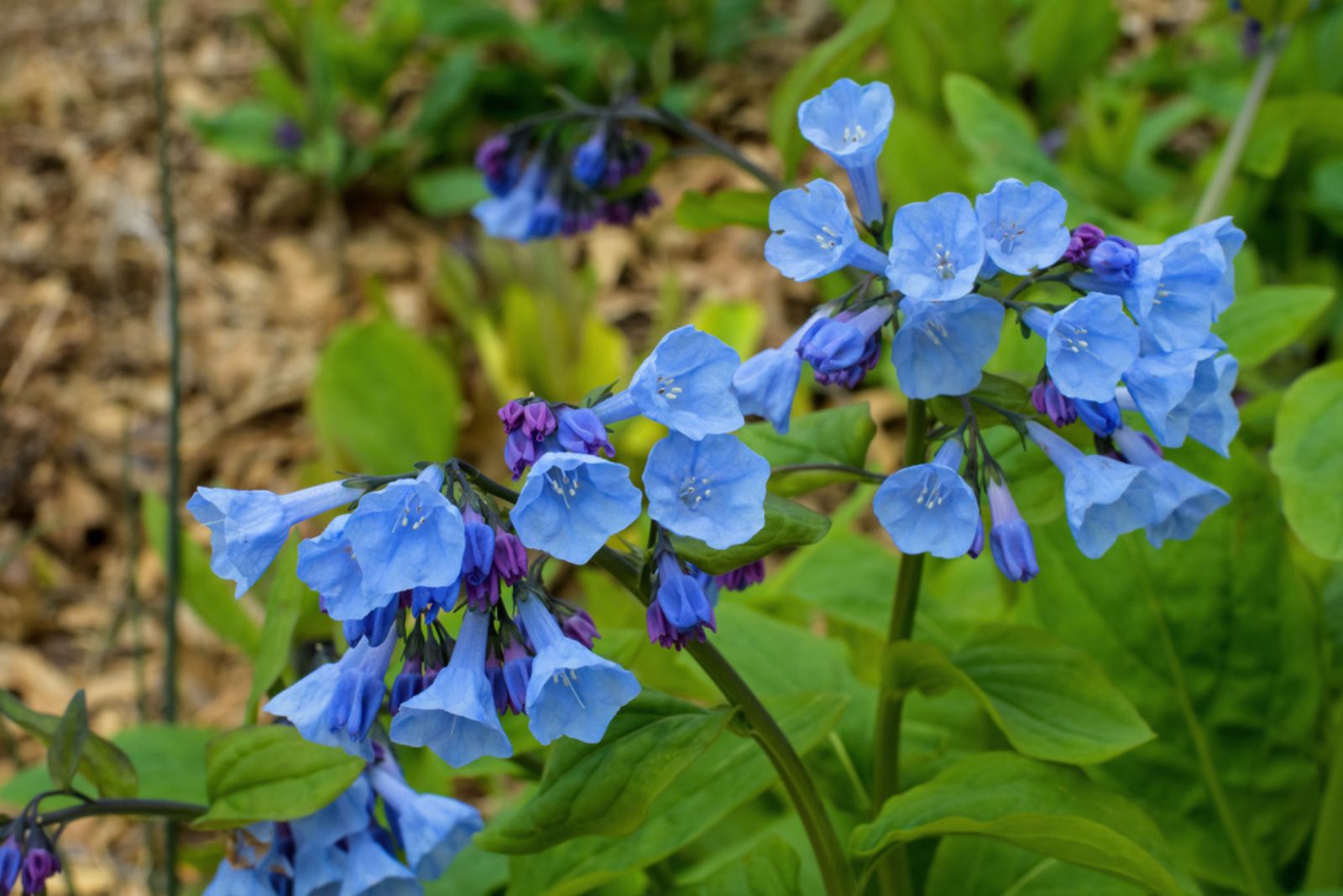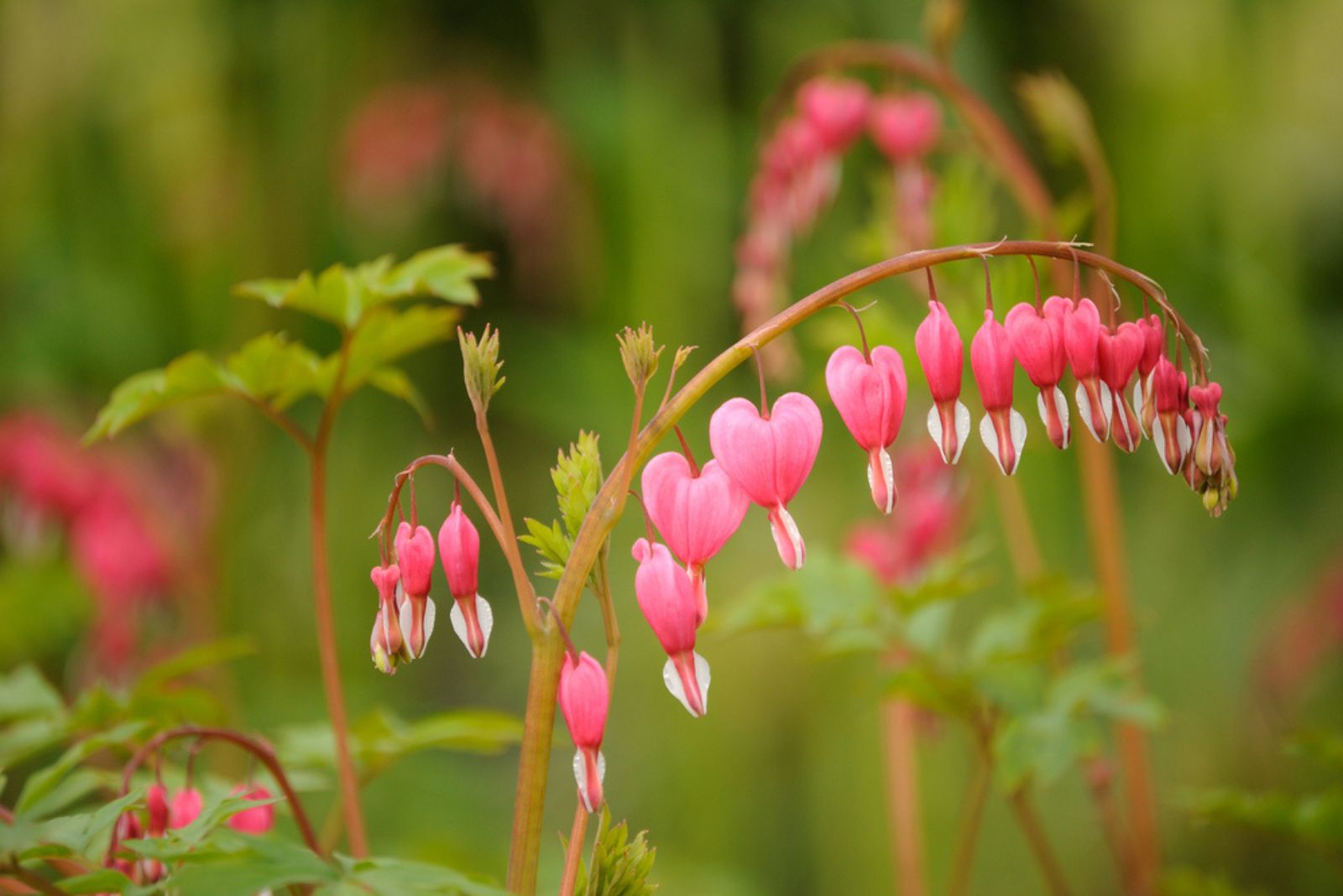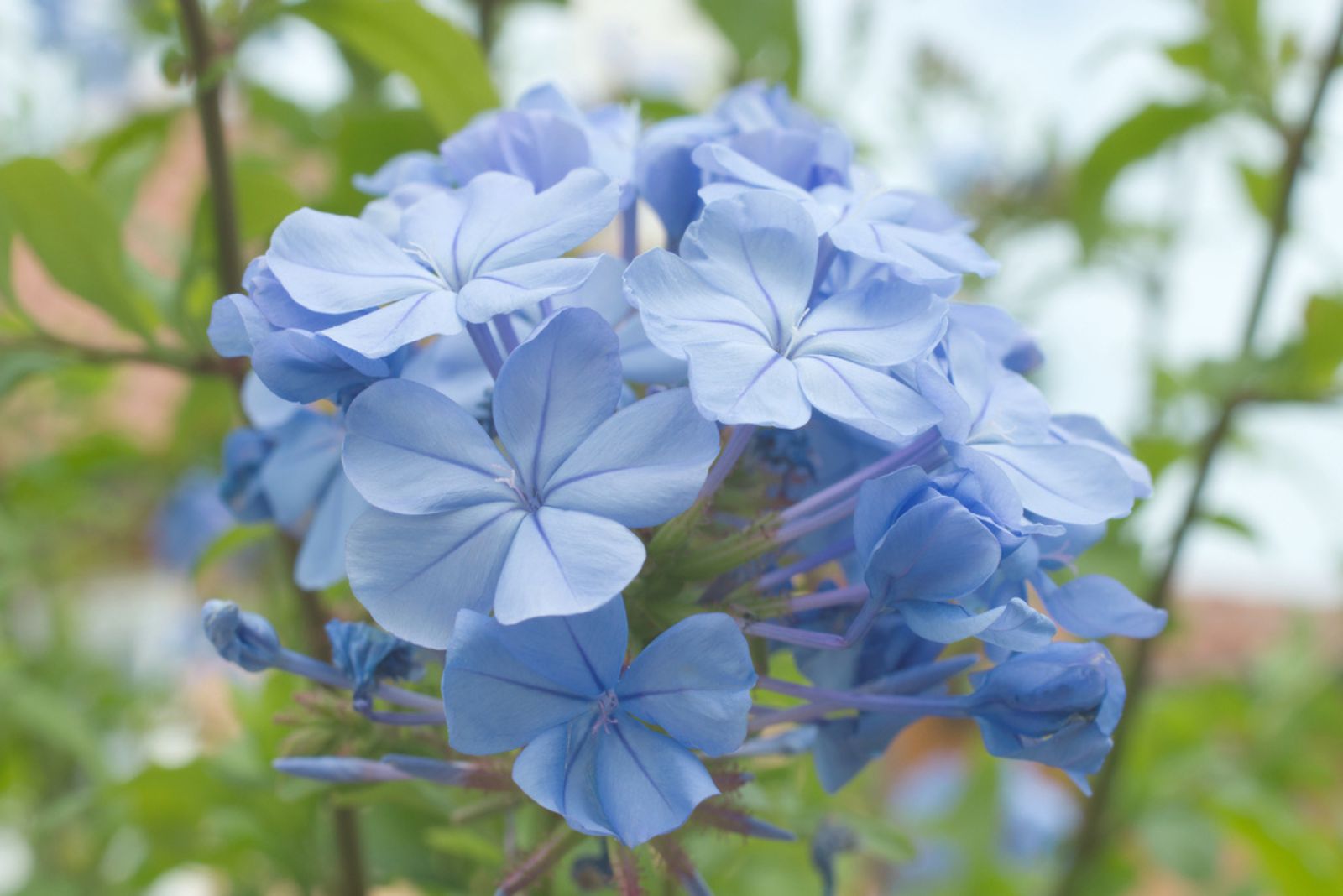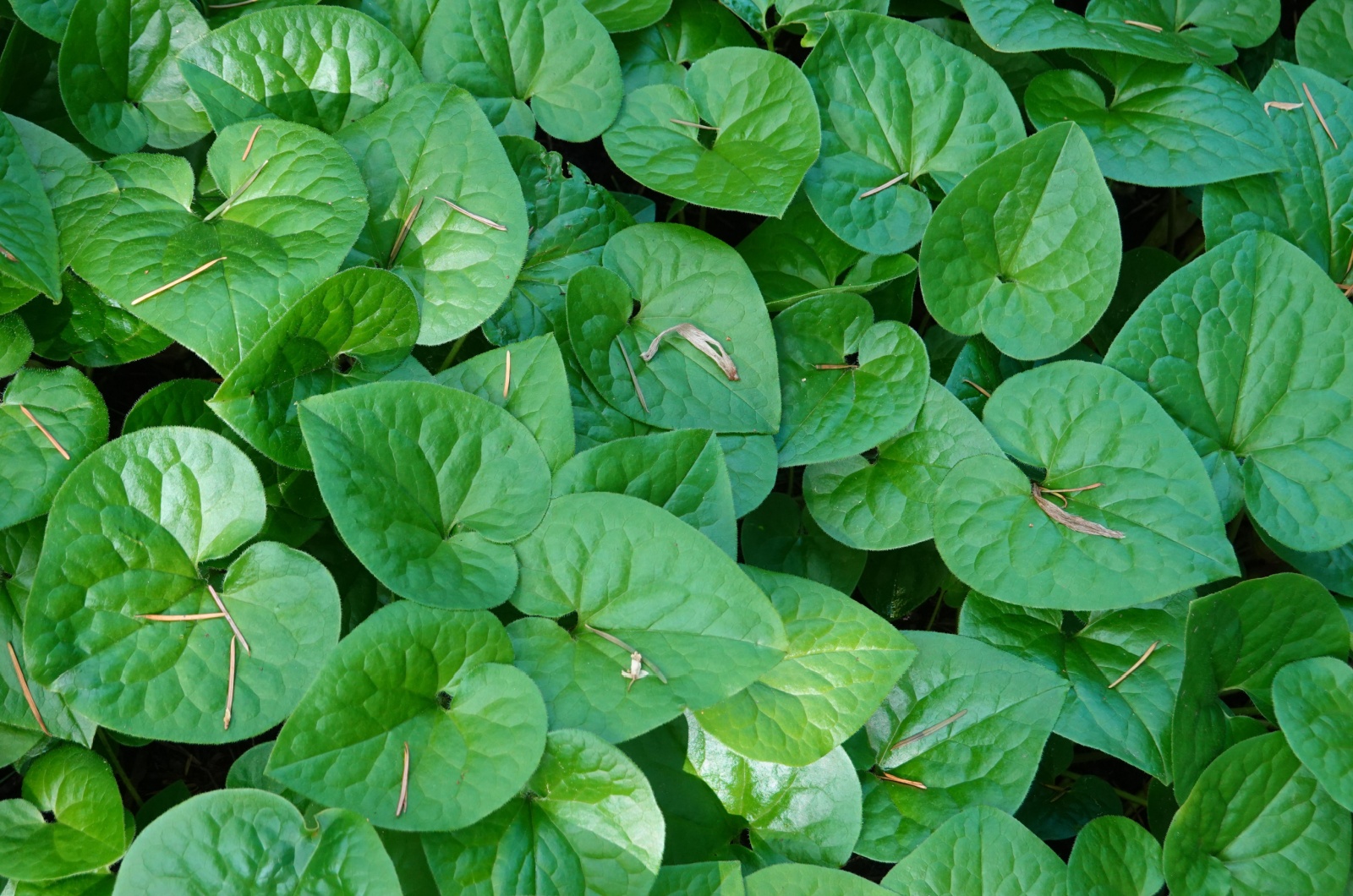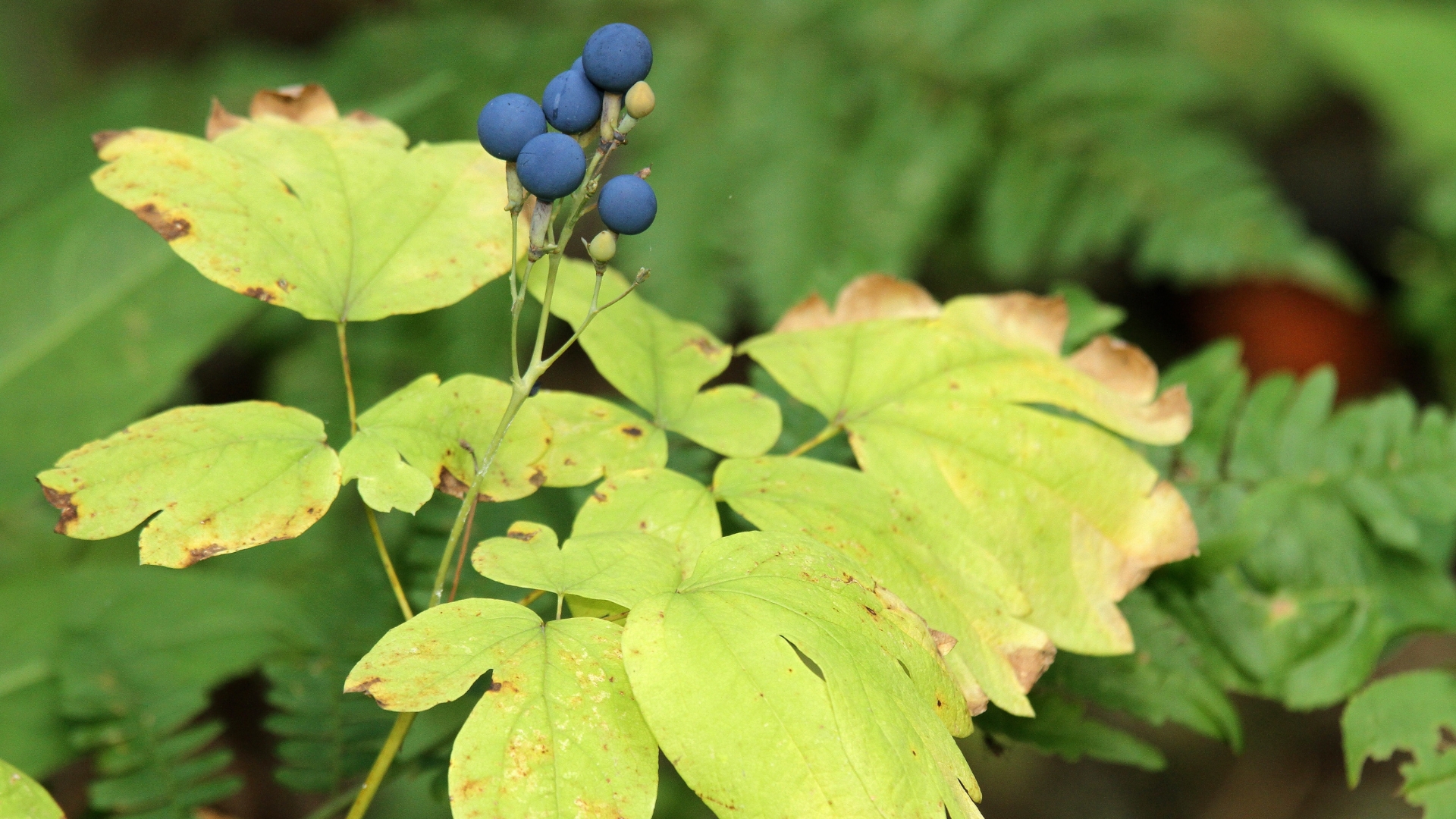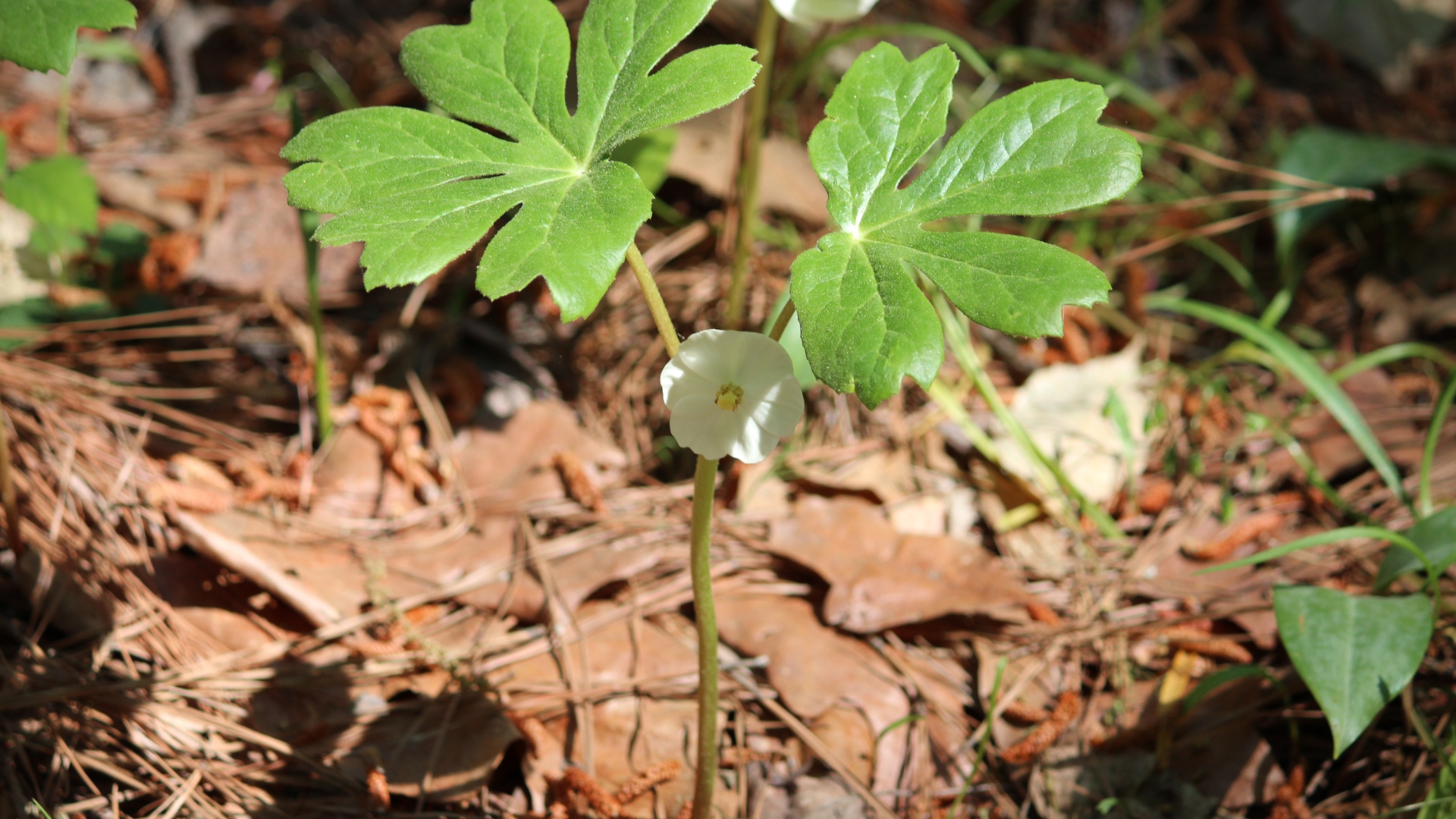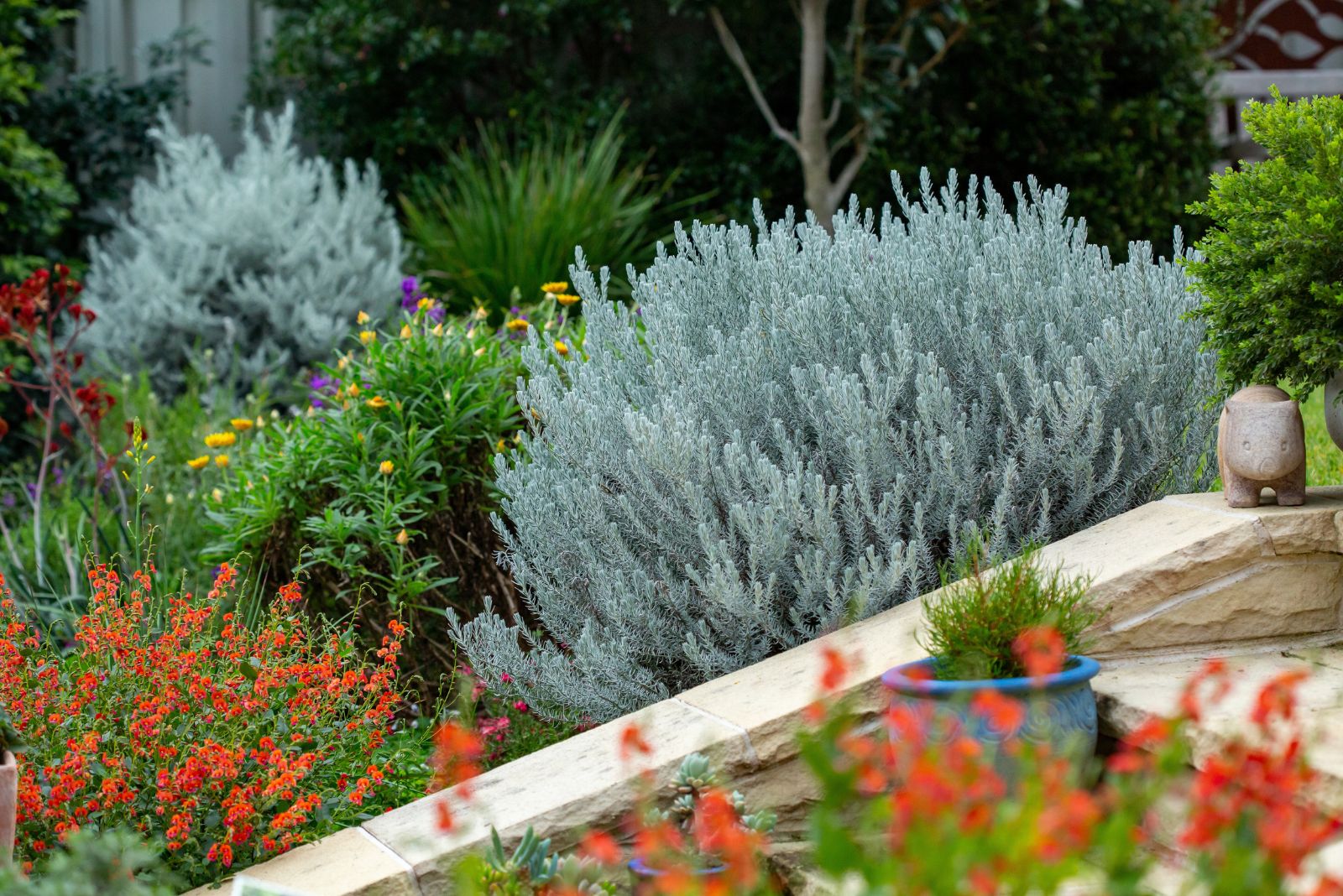Are you looking for a way to start a woodland garden but don’t know where to begin? Adding some native plants that flourish in shade could be just the thing you need.
Find ones that are native to your region and you’ll reduce the amount of work you have to do tremendously as they usually require less moisture and nutrients, among other things.
Let’s dive in!
Why Grow Native Plants?
Natives are plants adjusted to a particular region, and all you need to provide is soil and moisture. If the plant is native to your area, it will thrive there even if you neglect it.
There are many native plants that aren’t that popular, but have numerous benefits for your garden’s ecosystem.
• They adjusted to the local environment.
• They provide food and shelter for native pollinators.
• Native plants attract local wildlife and birds.
• Many of them are resistant to deer.
• Natives are frequently drought-tolerant and don’t require as much moisture as non-native plants.
• They help the overall environment and ecosystem.
• Native plants provide and increase natural habitats.
• They look stunning.
Another great thing about natives is that they will grow where cultivated species won’t, provided they’re native to that particular region.
You can grow them from seed or buy from trustworthy dealers and nurseries. Ask your neighbors to give you a plant or two the next time they’re dividing their clusters.
Just don’t dig them up from their natural environment; it’s illegal in many parts of the US.
Your woodland garden will look gorgeous with these colorful and green natives. Combine several of these species and create a year-round interest.
1. Appalachian Barren Strawberry
Native region: From Minnesota to Maine and down to Arkansas and South Carolina
Light requirements: Full sun to partial shade
Soil type: Fertile, dry to moderately moist, well-drained
This barren strawberry is a perfect addition to any spot with light shade, from under trees to garden edges.
The growth habit and leaves resemble those of edible strawberries, creating a thick tree-leaf mat on the ground. But unlike edible strawberries, this barren one produces vibrant yellow flowers in mid-spring, adding more interest to your garden.
It thrives in drier locations, so if you live in a humid and hot region, consider growing its relative – Piedmont barren strawberry.
2. Christmas Fern
Native region: From Nova Scotia to Minnesota and down to Florida and eastern Texas
Light requirements: Full to partial shade
Soil type: Rich, well-drained, sandy or rocky
Christmas fern is quite hardy, has a long lifespan, and deer and rabbit don’t seem to bother it.
It won’t flower in a traditional sense, but its deep green fronds will provide a year-round interest. The plant sheds its old foliage in spring and clads itself in new attire it will carry until the next winter.
Christmas fern grows in clusters that get larger and larger. You can divide those clumps and plant them in other parts of your garden or give some to your neighbor.
3. Columbine
Native region: Eastern regions of the US
Light requirements: Full sun or partial shade
Soil type: Fertile and well-drained
Columbine is on the list of Iowa native plants, but you can grow it all over eastern parts of the US. It is an excellent addition to your garden and will attract numerous pollinators.
It flourishes in both full sun and partial shade, so you won’t have to look for a perfect location for too long.
The fern-like leaves grow well with any fern on this list, while the spring and summer blossoms fulfill the entire look, giving it more appeal.
Columbine is susceptible to powdery mildew, so make sure to give it enough space and proper airflow to thrive.
4. Common Bluets
Native region: Eastern North America
Light requirements: Full sun to partial shade
Soil type: Moist, well-draining, and slightly acidic
Pale blue, almost white blossoms of bluets appear in mid-spring and last until mid-summer, adorning the place where they grow with their grace.
They’re not that hard to grow and will reward your effort by attracting numerous native pollinators and beneficial insects to your garden.
Combine them with early bloomers, such as spring beauties and common violets, to keep your garden visually appealing for longer.
5. Downy Yellow Violet
Native region: Eastern and midwestern North American forests
Light requirements: Partial to full shade
Soil type: Humus-rich, loose, moist, and well-draining
Your woodland garden floor deserves a flush of color, and downy yellow violet will provide exactly that.
Hardy leaves appear in late winter, followed by vivid yellow flowers in early spring. These violets contain plenty of nectar which attracts various bees and other pollinators.
Pair them with pink alumroot and barren strawberries for more appeal or combine the yellow clumps with purple-blue common violets for more visual interest.
6. Foamflower
Native region: Eastern North America
Light requirements: Partial to full shade
Soil type: Rich, well-drained, and consistently moist
Foamflower is the perfect addition to your moonlight garden as it looks stunning at night. It is also a great border plant and can blend into any woodland design.
This perennial flower doesn’t grow very tall, so you can also use it as a ground cover. It is evergreen in regions with mild winters. In colder winters, its foliage dies back, but it springs back up come spring.
Foamflower grows in clumps, so you can divide it if it ever feels too much. But once you see the foamy flowers in mid-to-late spring, you’ll think that over.
7. Goat’s Beard
Native region: Temperate forests of the Northern Hemisphere
Light requirements: Partial shade
Soil type: Moist and humus-rich
This showy perennial will provide you with firework-resembling blossoms in spring that pair well with other flowers.
Pollinators love the nectar-rich creamy blooms, which attract butterflies in particular.
Goat’s beard has a male and female form, each with distinctive features. Male ones produce showier flowers, while female ones have decorative seed heads after blooming.
Growing this plant from seed can be a bit tricky, so the best option for multiplying it is by division.
Use the goat’s beard in your perennial flower beds, as a foundation plant, or grouped in your woodland garden.
8. Green And Gold
Native region: Woodland regions from Ohio to Georgia and westward towards Louisiana
Light requirements: Full sun to full shade
Soil type: Rich, well-drained, and acidic
You can use green and gold as a low-maintenance grass alternative due to its dense and low-growing habit.
The deep green foliage gets sprinkled with bright yellow flowers. The plants will continue to blossom sporadically until the frost stops them, but the first bloom is the most striking.
If you don’t want to replace your entire lawn with it, use it as a border plant in your flower beds or pathways.
Green and gold is easy to grow from seed and to maintain because all you’ve got to do is remove the spent flowers to tidy it up.
9. Jacob’s Ladder
Native region: From eastern Ontario and Quebec down through most of the eastern US towards Minnesota, Oklahoma, and Mississippi
Light requirements: Shade or full sun if kept moist
Soil type: Moist, well-drained, and slightly acidic
Jacob’s ladder produces adorable lavender or blue flowers around May and June and has fern-like leaves that are glorious in spring.
The bell-resembling blossoms cluster at the end of the flower stalk and attract butterflies and native bees.
Jacob’s ladder naturalizes in woodland settings and spreads by self-seeding, so you won’t have to replant it over and over again.
10. Lady Fern
Native region: Throughout the Northern Hemisphere
Light requirements: Shade to partial shade
Soil type: Fertile and moist
Lady fern is a great stand-alone addition to a container garden or you can group a couple of plants and give your yard a woodland feel.
Use it as a border for your pathway, a unique ground over, pair it with hostas, spring beauty, and Jacob’s ladder, or use it as a way to landscape around trees.
Lady fern is deciduous and unfolds its 2-3 feet long fronds in spring. Mix it with other ferns and make the north side of your garden pop.
11. Large-Flowered Bellwort
Native region: Eastern and central North America
Light requirements: Partial or full shade
Soil type: Fertile, moist, and well-drained
This native spring bloomer is perfect for those shaded corners where nothing grows, or for creating a woodland garden.
Pointed velvety leaves and downward facing yellow bells look stunning on their own or in groups with other woodland wildflowers.
Grow large-flowered bellwort from seed or propagate it by dividing the large clusters. Also, it spreads by underground stems (rhizomes), but it’s not invasive, so there’s no fear of it choking out your other plants.
12. Northern Maidenhair Fern
Native region: Moist woodlands of eastern North America
Light requirements: Partial to full shade
Soil type: Humus-rich, moist, and well-drained
Northern maidenhair fern is one of the evergreen ferns you can add to your garden for more depth and texture.
It is perfect for shaded and moist locations, and deer and rabbits won’t bother it.
The delicate appearance of northern maidenhair fern contrasts its hardiness, making it a popular choice in gardens.
Tall and dark stems unfurl in spring, topped with some fiddlehead greens. They later unfold into new fronds, giving it a fuller and more beautiful appearance.
The northern maidenhair fern is easy to grow, just make sure not to expose it to too much sunlight or else its delicate fronds would turn brown and die.
13. Ostrich Fern
Native region: Eastern American woodlands
Light requirements: Partial to full shade
Soil type: Very moist, nutrient rich, and slightly acidic
This impressive fern needs plenty of room to grow and spread, so don’t cram it in. It will create beautiful green colonies resistant to deer and rabbits and spread by rhizomes.
Ostrich fern prefers cooler growing conditions and will die back sooner in warmer temperatures.
This large fern produces new fiddlehead greens each spring that quickly unfold to their mature size.
Fronds die back in late summer, enter dormancy in winter, and prepare for a new growing season come spring.
14. Partridge Berry
Native region: Eastern North America, from Newfoundland to Ontario and Minnesota, and down to Texas and Florida
Light requirements: Partial to full shade
Soil type: Fertile, well-draining, and slightly acidic
Finding a true ground cover isn’t an easy task, unless you’re thinking about growing a partridge berry. This ground-hugging perennial creates an interesting mat that prevents weed growth and reduces moisture evaporation from the soil.
Partridge berry isn’t an aggressive plant and won’t suffocate your other green buddies.
This ground-hugging perennial provides a year-long interest. The deep green leaves stay that way throughout the year and petite fragrant white flowers break their monotony in spring.
In summer, the berries turn red and provide a buffet for various birds.
15. Pink Alumroot
Native region: Western North America and Mexico
Light requirements: Partial shade or full sun if you keep it hydrated
Soil type: Loose, well-draining, and slightly acidic
There are many heuchera types you can grow in your shaded garden, but this one offers great interest with its tall and pink flower spikes.
Long-blooming flowers attract numerous pollinators and are a perfect addition to semi-shade areas, such as beneath tall trees.
16. Pink Muhly Grass
Native region: Prairies, woodlands, and pine barrens from Massachusetts south to Florida and west to Kansas and Texas
Light requirements: Full sun or partial shade if the soil isn’t too moist
Soil type: Dry to moderately dry, well-drained, and mildly acidic
It’s difficult to find a native ornamental grass that’s as beautiful as pink muhly grass. Airy magenta flowers introduce an explosion of color in fall, emphasizing the beauty of any garden.
There are also many companions for pink muhly grass that you can grow with it to accentuate its striking appeal. Bee balm, aster, black-eyed Susans – take your pick.
Another thing that makes this ornamental grass unique is its delicate appearance and robust ability to withstand heat and poor soils.
17. Solomon’s Seal
Native region: Eastern North America, from New England down to Florida and towards Nebraska and Texas
Light requirements: Partial to full shade
Soil type: Nutrient rich, moist, and well-draining
Solomon’s seal grows best in shade and is a perfect addition to your woodland garden.
Dense and alternate foliage provide great interest on their own. However, delicate green-white flowers appear in early-to-mid-spring, making this plant even more beautiful.
It pairs well with hostas, ferns, and other shade-loving perennial plants.
Solomon’s seal spreads slowly by rhizomes, so it doesn’t endanger the well-being of your other green buddies.
18. Spicebush
Native region: Eastern North America, from Ontario, Maine, and New York down to northern Florida, Texas, and Kansas
Light requirements: Full sun to part shade
Soil type: Very moist and well-drained
Spicebush is a medium-sized shrub that tolerates various growing conditions, making it perfect for many different locations.
It produces sensational burgundy-red blossoms in spring and summer that attract pollinators and various beneficial insects.
The leaves provide a seasonal interest, maintaining a fresh green color throughout the spring and summer and obtaining a flamboyant yellow in the fall.
Spicebush spreads by root suckers and rids you of the trouble of replanting it. However, it can turn into a thicket if you neglect it, so prune it from time to time to maintain its good looks.
19. Spring Beauty
Native region: Eastern temperate woodland regions of North America towards Minnesota
Light requirements: Full sun to partial shade
Soil type: Nutrient rich, moist, loose, and well-drained
This native is a great plant for lawns as it attracts native bees and native pollinators. It is an early bloomer and will provide food for these creatures before other flowers open their nourishing blossoms.
You can also add it to your woodland and shade gardens where it will provide visual interest throughout the early spring.
Grass-like foliage appears first, followed by white and delicate pink blooms. The leaves continue growing well into the spring, and then the plant goes dormant before the summer heat strikes.
Spring beauty spreads by rhizomes and self-seeds, so planting it once will bring you a life-time of gorgeous blooms.
20. Virginia Bluebells
Native region: Eastern North America, from Ontario and Quebec, down to New York and Minnesota, towards Kansas and Alabama
Light requirements: Partial to full shade
Soil type: Fertile, moist, loamy, well-drained, and neutral
The vast expanse of Virginia bluebells decorates the woodland floor of many forests in eastern North America.
And it is a source of delight in home gardens, too. Virginia bluebells are very easy to grow, and you can start them from seeds or ask your friend to divide their clusters and give you some.
This plant has an upright growing habit and is filled with lush green leaves throughout the growing season. The spring brings pink buds, which are soon followed by gorgeous bell-shaped blue blossoms.
Virginia bluebells pair well with other shade-loving wildflowers and plants, such as spring beauty, ferns, and hostas.
It goes dormant in the summer, only to emerge more beautiful than ever come spring.
21. Western Bleeding Heart
Native region: Moist woodland area of the Pacific Northwest, from British Columbia to California
Light requirements: Full sun or light shade
Soil type: Fertile, moist, and well-drained
This plant grows best in dappled shade, but will tolerate full sun in cooler climates and more moist conditions.
Furthermore, caring for the bleeding heart is fairly easy, so you won’t have to invest all your time to have a gorgeous garden.
And if you care for it well, the plant will begin to naturalize, benefitting your garden’s ecosystem, its pollinators, and wildlife.
Fern-like foliage reveals pendulous pink heart-shaped blossoms in mid-to-late spring and then again in early fall.
Pair the western bleeding heart with other wildflowers that love dappled shade, such as forget-me-nots and columbine.
22. Woodland Phlox
Native region: Eastern North America, from Quebec and Ontario, down to Vermont and Florida, towards South Dakota and New Mexico
Light requirements: Partial shade
Soil type: Fertile, moist, and well-draining
This spring bloomer is a perfect ground cover for woodland gardens. It produces adorable clusters of pale purple blossoms that provide an early season interest.
You can also add it to your shaded flower beds, use it as an edging plant, or border the pathway that lies in shade.
Divide the clusters or sow the plant from seeds, and soon your garden will be brimming with lively bees, butterflies, and hummingbirds.
23. Wild Ginger
Native region: Eastern and Central North America
Light requirements: Partial to full shade
Soil type: Moist, rich, and well-drained
Wild ginger is a fantastic ground cover for shaded areas, creating a dense carpet of heart-shaped leaves that suppress weeds and retain moisture.
It thrives in rich woodland soil and is a great option for naturalizing under trees.
While the flowers are hidden beneath the foliage, their unique reddish-brown blooms attract pollinators like flies and beetles.
Pair wild ginger with ferns or foamflower to create a lush, layered effect in your woodland garden.
24. Blue Cohosh
Native region: Eastern and Central North America
Light requirements: Partial to full shade
Soil type: Moist, loamy, and well-drained
If you’re looking for an elegant woodland perennial, blue cohosh is an excellent choice. It emerges in early spring with bluish-green foliage that darkens as it matures.
In late spring, delicate yellow-green flowers appear, followed by deep blue berries in the fall.
This plant is incredibly low-maintenance once established, making it a great addition to a shaded perennial border or naturalized woodland area.
Combine it with wild geranium or Solomon’s seal for a beautiful layered display.
25. Mayapple
Native region: Eastern North America
Light requirements: Partial to full shade
Soil type: Moist, well-drained, and rich in organic matter
Mayapple is a unique woodland plant with large, umbrella-like leaves that create a striking visual impact in shaded areas.
It spreads through underground rhizomes, forming a lush green ground cover in the spring.
In early summer, small white flowers hide beneath the foliage, eventually giving way to yellow fruit that provides food for wildlife.
Mayapple pairs well with ferns, trilliums, and other shade-loving native plants, making it a must-have for any woodland garden.
Final Thoughts
If you have a shaded location in your backyard and are looking to start a woodland garden, you have numerous plant options to fill it with.
Choose the ones that suit your growing conditions best and combine a couple of varieties to provide a year-long interest.
Experiment with these species and let them inspire you to try new things. Explore other, not so well-known, native plants for shade and let them beautify your garden.

